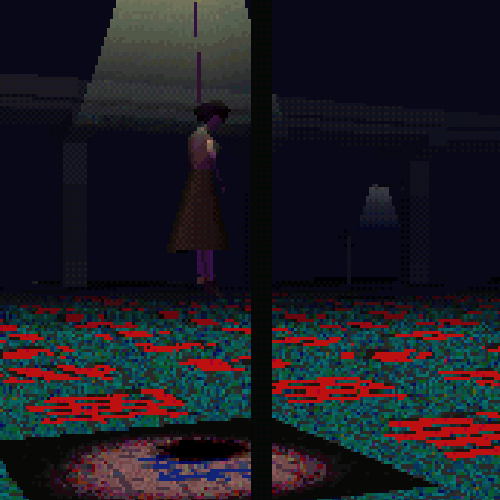Trending
Opinion: How will Project 2025 impact game developers?
The Heritage Foundation's manifesto for the possible next administration could do great harm to many, including large portions of the game development community.

Featured Blog | This community-written post highlights the best of what the game industry has to offer. Read more like it on the Game Developer Blogs or learn how to Submit Your Own Blog Post
This post is about the narrative possibilities of gaming; how gaming needs to push the line between reality and illusion in terms of narrative.

Recently, I watched The Nerd Writer’s analysis of Stoshi Kon’s final film Perfect Blue. In the video, he discussed how Kon’s use of quick edits—something that can’t be done quite as seamlessly in live action films—blurs the line between what is real and what is fiction. Indeed, there are several scenes in Perfect Blue where the viewer has no clue if what is happening is real, imagined, a dream, or something altogether different.
To say that the video had an impact on me is an understatement, and got me thinking about how this technique is used in other mediums. In literature, for example, an author can cram several events into one sentence by using relative clauses, parenthetic asides, dashes, and stream of consciousness to name a few. This is actually a very common technique in German literature; people lovingly call this the “matrushka doll effect,” since the sentence seems to be unpacked like the Russian dolls.
However, when I tried thinking about how videogames incorporate similar techniques into the genre I couldn’t think of a single title. Certainly, there are games that become meta—the original Metal Gear Solid for instance has you mess with your Playstation. Yume Nikki even goes so far as to only reveal a certain character at random moments. Nonetheless, it doesn’t seem like any videogames have taken the next step in blurring the reality of the gameplay world with un-reality of another world inside the game.
Perhaps there are games that will go against typical gaming mechanics. For instance, take a game like LSD: while playing it, the player really has no idea what is going on. At one point you are walking towards a door, and then out of nowhere you find yourself on a roof. This game is very close to blurring the line between what is “real” and what “isn’t.” However, the line is quickly revealed once the level is over, and the calendar screen pops up on the screen revealing to the player that you were simply dreaming.

Yet, this never happens in Perfect Blue. As the Nerd Writer points out, there is never really a time when the viewer is fully certain that what is being shown is actually happening, or is simply a dream or hallucination. This, effectively, makes the viewer question everything he or she watches. Furthermore, it makes the viewer question what is and isn’t real.
This concept, namely to question what is and isn’t real in a medium, is intrinsic to the essence of videogames. Indeed, people always discuss that a main difference between videogames and every other medium is the level of agency a player has. The player actively participates in the creation of the content. Yet, this participation is never called into question. One might argue that the meta-game is similar to what I am discussing. The meta-game is a part of the game, yet simultaneously has nothing to do with it. However, the meta-game in no way questions what the player perceives as what actually occurs in the game, and therefore shouldn’t count.
Without a doubt videogames have the potential to effectively break the line between reality and illusion. At a time when Microsoft’s AR and various VR systems are becoming more popular, this would be a perfect time for game creators to take gaming narratives to a new level.
Read more about:
Featured BlogsYou May Also Like